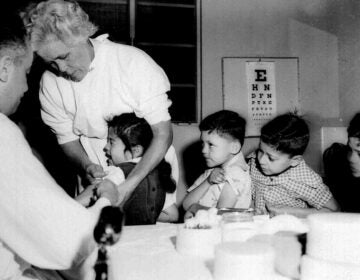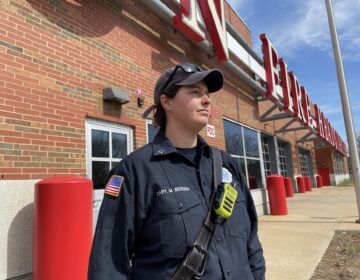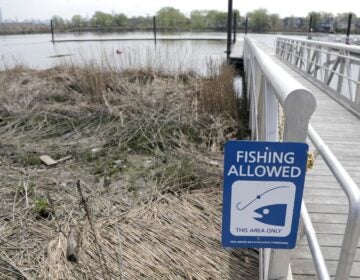Giving education reform a bad name
Andrew J. Coulson, director of the Cato Institute’s Center for Educational Freedom, has an editorial in the Wall St. Journal this week assailing the “explosive growth” in America’s public school work force.
This is commentary from education blogger Laura Waters of NJ Left Behind.
Andrew J. Coulson, director of the Cato Institute’s Center for Educational Freedom, has an editorial in the Wall St. Journal this week assailing the “explosive growth” in America’s public school work force. Since 1970, he charges, student enrollment has “flat-lined,” yet the number of teachers and instructional aides has doubled, from 3.3 million to 6.4 million, with concurrent increases in costs.
Coulson writes, “America’s public schools have warehoused three million people in jobs that do little to improve student achievement—people who would be working productively in the private sector if that extra $210 billion were not taxed out of the economy each year.”
But there’s a panacea readily available: create state voucher systems to send all our kids to private schools. (Also, elect Mitt Romney because President Obama’s education agenda is an “expensive and tragic failure.”)
Whoa, Nellie!
While it’s no doubt a challenge to squish a radical paradigm shift within the confines of the WSJ’s 600-word limit, that’s no excuse for specious logic or casual disregard for facts. Worse, this sort of inflammatory rhetoric gives education reform a bad name.
For example, let’s look at Mr. Coulson’s claim that American public schools hire too many teachers and aides (i.e., have too low a teacher/student ratio), and that private schools are cheaper and produce higher-achieving students.
He writes, “If we returned to the student-staff ratio of 1970, American tax payers would save about $210 billion in personnel costs.”
And, “American private education is substantially more efficient than its public sector, producing higher graduation rates and similar or better student achievement at roughly a third lower cost than public schools (even after controlling for differences in student and family characteristics).”
So, our inefficient public education coddles students through unnecessarily small class size, unlike private institutions.
In a boon for skeptical readers, there’s some recent data from the Organization for Economic Cooperation and Development (OECD), which surveyed class size in 29 countries. While the average class size for OECD countries was 21.4 children, America’s public school classrooms are a little crowded, at 23.1 children per classroom. (Certainly, two of the highest-achieving countries — Japan and Korea — have large class sizes, but student homogeneity and cultural differences play a role in that sort of efficiency.)
In comparison to other countries, American public classrooms don’t employ too many teachers.
But according to Mr. Coulson’s logic, class size in America’s private school classrooms should be larger than public classrooms. After all, privatization of public education is “substantially more efficient.” According to the OECD data, however, the average private primary school classroom has 19.4 students per teacher while the average public primary school classroom has 23.6 students per teacher.
In other words, private schools are less efficient.
Concordantly, private schools should spend less per pupil in order to achieve that efficiency. However, a 2009 report from NJ’s very own Dr. Bruce Baker (of Rutgers), “Private Schooling in the U.S.: Expenditures, Supply, and Policy Implications” compared costs among parochial schools, private day schools, and public schools. Dr. Baker found that, after adjusting for region and inflation, independent day schools spent about $15,000 per pupil while public schools spent about $8,402.
In other words, public schools spend less per pupil than private schools.
So what’s the big deal? Mr. Coulson, perhaps, has earned the right to skew some enrollment facts (see above); or to disregard history (he blames No Child Left Behind on Pres. Obama, but it’s Bush’s baby, and bears a passing resemblance to progenitors Daniel Patrick Moynihan and Ted Kennedy); or to conflate increased hiring of teachers and instructional aides into one category (case in point: N.J., where the push for special education inclusion has resulted in a need for many more aides); or to ignore looming complexities (in particular, the challenges of scalability).
Here’s the big deal: this sort of fact-challenged rhetoric undermines education reform. Last month in New Jersey, union leaders and education reformers laboriously bushwhacked a narrow path through the political weeds of tenure reform, proving that sustainable change can be achieved incrementally and collaboratively. If we applied Mr. Coulson’s take-no-prisoner technique, we’d have progressed nary a foot. Big ideas are fine, but only in the company of logic and reality.
Laura Waters is president of the Lawrence Township School Board in Mercer County. She also writes about New Jersey’s public education on her blog NJ Left Behind. Follow her on Twitter @NJleftbehind.
WHYY is your source for fact-based, in-depth journalism and information. As a nonprofit organization, we rely on financial support from readers like you. Please give today.




